Sunday Dec 14, 2025
Sunday Dec 14, 2025
Thursday, 13 June 2024 00:20 - - {{hitsCtrl.values.hits}}
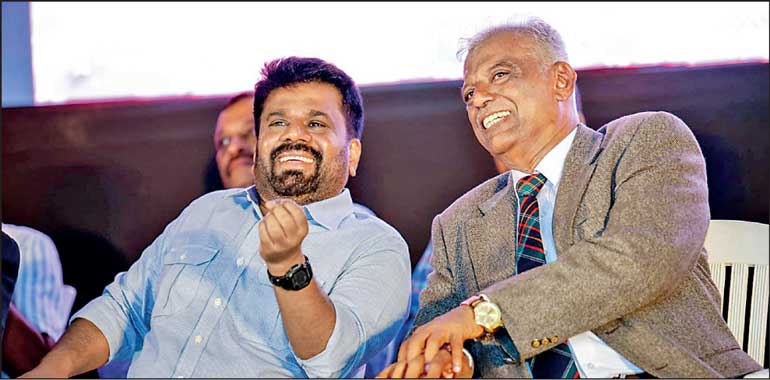
No longer on opposite sides
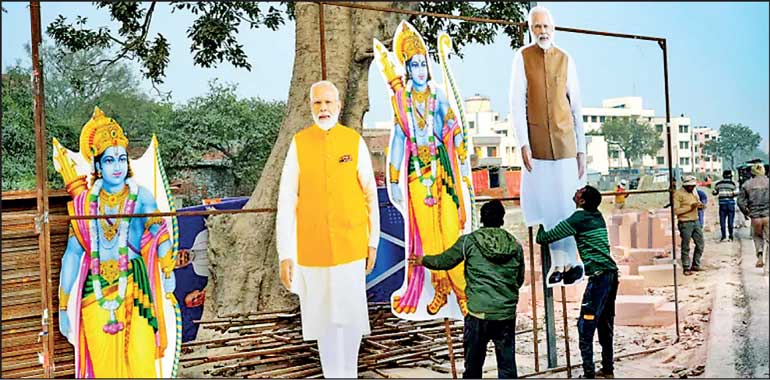
Lord Ram and PM Modi
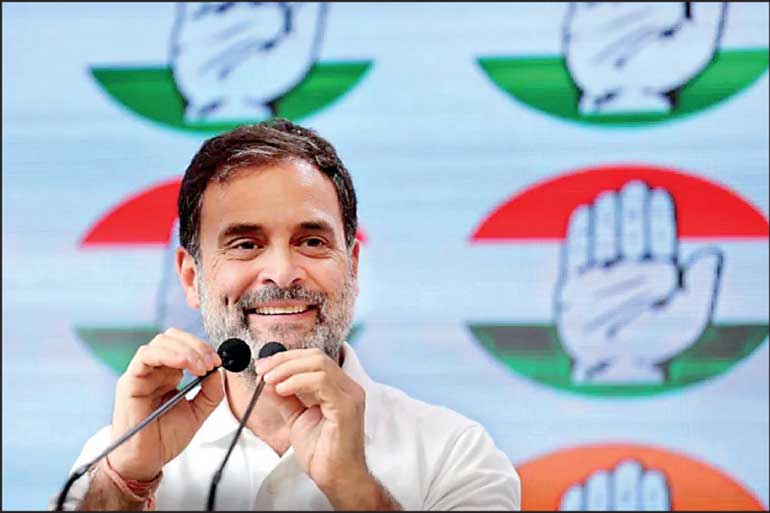
Rahul Gandhi scores moral victory
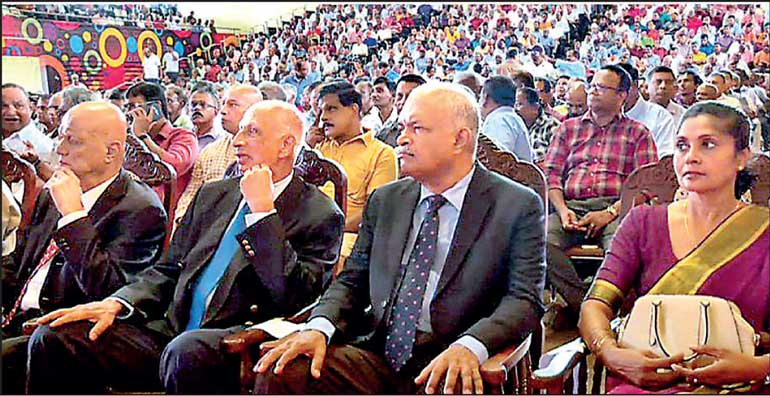
Retired Police Officers Conclave backs AKD

Top international economists meet NPP
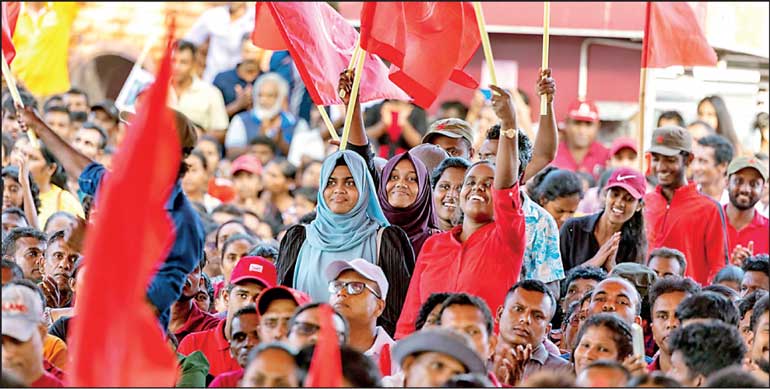
NPP Youth, Hambantota
‘Is There Another Way? Debt Restructuring, the IMF and the Future of Sri Lanka’, was the title and topic of the most educative, enlightening public policy event of this year. Organised by Yukthi a newish civic association spearheaded by Ahilan Kadirgamar, Ermiza Tegal and Melanie Gunatilleke, it featured three top-notch international economists, Prof. Jayati Ghosh, Prof. Martin Guzman --former Economics Minister of Argentina-- and Charles Abugre. (https://www.youtube.com/live/3SF2L0nh_l4?si=G7D82fcNI2YSxu5A)
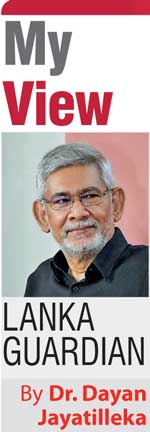 Watching the video, my wife Sanja and I had the same thought: these experts and not Lazard et al, should be our advisors on debt restructuring and consultants on our negotiating team, and our negotiating team should certainly not be the current one.
Watching the video, my wife Sanja and I had the same thought: these experts and not Lazard et al, should be our advisors on debt restructuring and consultants on our negotiating team, and our negotiating team should certainly not be the current one.
My key takeaways from what Ghosh, Guzman and Abugre said were:
 Each country must do its own expert research rather than blindly accept the IMF narrative.
Each country must do its own expert research rather than blindly accept the IMF narrative.
 Every country should come up with its own counter-plan and negotiate hard or they will find their citizens far worse off than they are at the beginning of an IMF debt restructuring program.
Every country should come up with its own counter-plan and negotiate hard or they will find their citizens far worse off than they are at the beginning of an IMF debt restructuring program.
 All debtor countries should constantly exchange information and experiences with each other in a structured way. (I would say they should establish a common forum).
All debtor countries should constantly exchange information and experiences with each other in a structured way. (I would say they should establish a common forum).
My personal reflection is that Sri Lanka fortunately has a portal coming up, and must choose an administration which will be most independent-minded and least ‘programmed’ by the IMF and private creditors. That seems to be the JVP-NPP.
However, post-presidential and parliamentary elections, it will take a broad coalition to bring together the sociopolitical and intellectual forces, locally and globally, to negotiate with the IMF and the private creditors while intelligently defending the national interest and taking a counter-hegemonic stand.
Messy mystery
Sajith Premadasa is a very good speaker and debater, especially effective at debating economics. He has participated in more Budget debates than Harsha de Silva or Eran Wickremaratne. Had he debated Anura Dissanayake, a formidable speaker, it would at least have been a level playing field. Why then have he and his party made a hot mess of the debate issue?
Ranasinghe Premadasa never ducked a challenge, least of all a challenge to debate, whatever the venue. He never imposed preconditions. He didn’t insist on a double-bill, with colleagues joining the fight. He couldn’t resist the difficult, fast-paced, folk art of spontaneous “Vaada baila” or ‘debating baila’; an open-air duel before an audience between the early Lankan equivalent of rappers, baila versifiers.
By contrast, when the day came for the debate shootout, June 6th, one of the days suggested in writing by the SJB itself, Sajith didn’t show, as was seen nationwide. If Sajith didn’t like to debate on the state-owned ITN he could have made a counter-suggestion concerning the venue, naming one or more private stations. He didn’t. Still hasn’t.
To retrieve the situation Sajith should debate his rival(s) after the date is announced for the election, without a silly insistence on a debate between ‘economic teams’ as precondition of a debate between candidates.
Why is Sajith missing the opportunity to debate by recourse to absurd conditionality?
Perhaps the SJB’s policy oligarchy and international backers are so afraid of the legacy of President Premadasa’s developmental populism—only slightly less than they are of Anura Dissanayake’s left-populism—that Sajith Premadasa has to prove that he will not implement his father’s policy model if elected. To ensure he doesn’t deviate from economic orthodoxy, he has to wear the equivalent of a GPS tracker ankle-bracelet, like prisoners on probation. That ankle-cuff is the Economic Council consisting of Ranil’s trusted proteges, long-standing neoliberals.
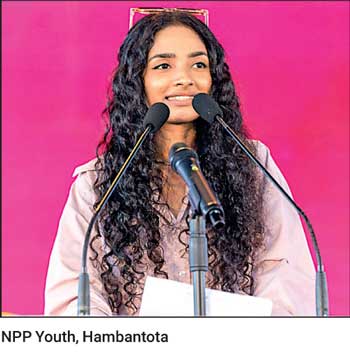 AKD’s double-whammy
AKD’s double-whammy
The SJB draws comfort from an interesting twist. Anura’s appearance on the state-run ITN, in conversation with Sudharman Radaliyagoda, a Rajapaksa propagandist with a blotted copybook, aroused criticism from some YouTubers sympathetic to the NPP. Neither they nor the SJB have spotted AKD’s masterly move.
When he walked into the ITN studio, Anura had made a conscious, calculated, calibrated choice. He took the hit of shock and dismay from a relatively limited grouping of social media activists in order to make a major strategic breakthrough. The ITN is the ‘organic’ TV station of the SLFP-SLPP constituency and has been so for over a quarter-century. With the SLFP and SLPP propping up Ranil and his policy package, these voters feel alienated. In a superb flanking manoeuvre, Anura Dissanayaka went behind enemy lines and used the opportunity to address them, win them over.
The ITN move was part of a one-two punch by Anura. The follow-up was the packed assembly of retired Police officers, including the best-known and most highly-reputed. Many of them had been in the frontline of counter-terrorism and counter-insurgency investigations and operations against both the LTTE and the JVP. The JVP-NPP and Police ex-brass equation was a breakthrough of major magnitude; a rapprochement of the forces of progressive change with those of law-and-order.
Emperor no more
The result of the Indian election could not have been better for India and its neighbours, including Sri Lanka. Prime Minister Modi won, but his party could not secure a majority on its own. He is only the second Indian leader to be elected PM for the third time but his predecessor in that achievement, Jawaharlal Nehru and his Congress party won a majority. Modi’s victory was a relative one, not the absolute victory entrenching political hegemony that he explicitly sought with his slogan of “400 seats”.
Today, he is the leader of India, not the emperor or ‘God man’ of Bharat. He emerged from the magnificent new temple of Ram as de facto launch of his campaign, and he lost in Faizabad, the very area where Ayodhya is and the Ram Mandir had been erected. He is the Prime Minister of India thanks to the 28-seats of his coalition partners with whom he had to negotiate and compromise.
India arrived at the democratic maturity of a two-party system 20 years after Sri Lanka. Until then it was a one-party-dominant system with that party being the Congress. Under Modi and the BJP, India swung to a one-party-dominant system with a vengeance. What we see today is a swing back from political monopoly or oligopoly to competition; to a two-coalition system, with leading parties, BJP and Congress as cores of the contending coalitions. The unipolar moment of Indian politics is over.
The diversity of India is once again reflected in politics and ideology. The hegemonic moment of Hindutva has ended. The Nehruvian ‘idea of India’ is slowly reemerging. This is excellent news for India’s neighbours, India and the world.
 The unhealthy infusion of Hindutva into state and government and its adoption in practice as official, as state ideology; the presence of RSS cadre on overseas missions, entwined with conventional intelligence networks; the championing of the martial myth, the Ramayana, even as foreign policy doctrine; the dispatch of Swamis including from Ayodhya’s Ram Mandir identifying wholly imaginary Rama trails that traverse our island’s well-researched historical sites (e.g. Sigiriya) and preaching to us that “we are not two countries” – all this will start ebbing, as the Indian state registers the democratic verdict of its citizens, and begins to normalise as it sees on the horizon the nature of the next Government in five years.
The unhealthy infusion of Hindutva into state and government and its adoption in practice as official, as state ideology; the presence of RSS cadre on overseas missions, entwined with conventional intelligence networks; the championing of the martial myth, the Ramayana, even as foreign policy doctrine; the dispatch of Swamis including from Ayodhya’s Ram Mandir identifying wholly imaginary Rama trails that traverse our island’s well-researched historical sites (e.g. Sigiriya) and preaching to us that “we are not two countries” – all this will start ebbing, as the Indian state registers the democratic verdict of its citizens, and begins to normalise as it sees on the horizon the nature of the next Government in five years.
Who is responsible for beginning the healing of India, reducing the swelling—the hypertrophy-- of hegemonic false consciousness? Primarily, the Indian people, and secondarily, Rahul Gandhi, who walked over 10,000 kilometres from South to North, East to West, with a copy of the Indian Constitution.
Lessons for Lanka
The great lesson of the Indian election for Sri Lanka is the exposure of the essential hollowness of the Modi-Adani-Ambani model of economic growth and the flipside of the “world’s fastest growing economy”. In their entirely appropriate act of congratulating Prime Minister Modi on his re-election, the Leader of the Opposition as well as his shadow Finance Minister absurdly gushed over Modi’s economic success. As Opposition politicians their instinctive solidarity should be with the rejuvenated Indian democratic Opposition and its pluralist, inclusive values.
Sri Lanka’s Opposition should have instantly assimilated the lessons of the downside and therefore, relative failure of the Modi model. One would have especially thought that of the SJB because President Premadasa’s was a far more balanced, socially-sensitive, superior economic paradigm. But no, the “Modi economic model” was praised by the Opposition Leader in parliament in just those words, while his ‘economic wizard’ Harsha de Silva was even more gushing. (https://x.com/harshadesilvamp/status/1798545848462446912?s=48)
The Modi economic model has fissured politically, or rather, socio-politically, because the pattern of high economic growth obscured or actually engendered high unemployment, high prices, inequality, evictions and poverty that made the socioeconomically underprivileged in the Hindu-Hindi heartland vote against Modi and for the Congress-led I.N.D.I.A coalition.
Add to that, the vote of so-called low-castes among the Hindus. Caste discrimination speaks to the fundamental drawback of the Modi model and the fundamental advantage of the China-Vietnam model of growth. The Indian growth story has a dark underside: the continuation of the social apartheid that is the caste system in the rural areas. That system becomes more entrenched with the hegemony of Hindutva, which sanctifies the Brahminic caste hierarchy.
In contradistinction, the unprecedentedly rapid growth of China, model rests upon a peasantry and rural heartland fully emancipated from semi-feudal social relationships by the great revolution led by Mao Zedong, the Communist Party of China (CPC) and the People’s Liberation Army (PLA). That gives China a structural and systemic advantage over India. The archaic caste system has a drag-effect on India’s capitalist development, while crony monopoly capitalists (e.g. Ambani and Adani) provide top-heaviness.
Modi sought to cloak this reality in religious fundamentalism. That blew-back with the Muslim vote going heavily for the Congress-led coalition.
The socioeconomic disaffection of classes and strata within the Hindu majority was electorally buttressed by the farmers of the Punjab, rebelling explicitly against the laws which would permit the corporatization of the farm sector by Adani and Ambani.
This is the model that the bipartisan Sri Lankan policy elite seeks to impose on our people. The project of dependent, subaltern integration with India, is what I term ‘Vibheeshanomics’.
The SJB officially hails Narendra Modi’s economic model but not Ranasinghe Premadasa’s—though they praise some policies.
President Premadasa built a statue to Ravana the symbolic Resistor against invasion and external hegemony, on the road to Kataragama.
Russia war, world order
The anniversary of D-Day was commemorated in Normandy without an invitation for Russia. The rhetoric portrayed the Allies (minus the USSR) as responsible for the defeat of Nazi fascism. For those of us who grew up reading the history of WWII, this was an appalling travesty.
The Normandy landing was the opening of what was referred to by the leaders of the wartime allied powers, Roosevelt, Churchill, Stalin and de Gaulle (originally the first three) to launch a Second Front. This referred to a front in Western Europe. Stalin constantly reminded the Western leaders of their promise. The date for the opening of the Second Front kept being postponed.
Why the Second Front? Because the First Front of the war against Nazi Germany was well-known to the world’s peoples at the time, and to all students of his history since then. It was the Eastern front, or more precisely the Russian front. As Churchill noted in his multi-volume history, the vast bulk of the Nazi armies were deployed on the Eastern front and had their backbone broken on that front.
The turning point of the war against Nazi Germany was not D-Day at Normandy. It was Stalingrad, when the Red Army counterattack shattered the Wehrmacht divisions. The victory at Stalingrad (Winter 1942/’43) began the counteroffensive against Nazi Germany, with the Red Army pursuing the wounded “Nazi beast to its lair” (Stalin’s post-Stalingrad instruction), culminating in the hoisting of the red flag with the hammer-and-sickle over the Reichstag building by a 23-year-old soldier of the Soviet Red Army around 11pm on April 30th, in time for the dawn of May Day 1945.
Ironically but revealingly, Western leaders used the D-day celebrations to support Zelensky’s Ukraine and revile Russia. Ironically because today’s Ukraine hails as a hero, Stepan Bandera, notorious Nazi ally and war criminal. Ukraine is among the Eastern and Central European states (most belonging to NATO) which celebrate their wartime Nazi collaborators and destroy monuments to the Soviet Red Army which incurred huge human losses to liberate these countries from the Nazi yoke. Their elites now think that it was better to have supported Nazi Germany—the greatest political evil that humanity has experienced-- than Soviet Russia.
Today, the greenlight has been given by Western powers for Ukraine to strike deeply into Russian territory with advanced Western-supplied weapons systems. Western leaders explicitly call for the “victory” of Ukraine in the war; the “defeat” of Russia by Ukraine, not for a negotiated settlement. Western military chiefs project scenarios of NATO fighting Russia on the Ukrainian front in a few years.
This goes completely against the Realist doctrine that informed Western foreign policy for decades, from Kennan to Kissinger, namely to desist from any course of action and to restrain its allies from any course of action which could bring the West and Russia into an armed conflict.
This rupture from realism follows from the initial rupture, warned against in 1997 by George Kennan in the New York Times (‘A Fateful Error’), namely expanding NATO to the borders of Russia to the point that it would constitute or be perceived as a threat. From Kennan to William Burns, the current CIA Director when he served as Ambassador Russia, the expansion of Western power into Ukraine, the de facto incorporation of Ukraine into the Western strategic system, was warned against by realists as an offensive move which would be perceived as an existential threat and which therefore constituted a Russian ‘red line’.
The West has set itself on a collision course, not so much with Putin – who, despite his demonisation by the West, is hardly the most anti-Western hawk in Russia’s public life or state system—but with the largest country on the planet and the indomitable national spirit of the Russian people. The generation growing up in Russia today would have no memory of the West as partner, but only as adversary who terminated even cultural exchanges in an attack against not only the Putin regime but all Russians; Russia as a country. Someday, this generation will wield power.
What lies behind the West’s irrational risk-taking? NATO’s hot war --so far by proxy-- against Russia, is part of the West’s offensive against China, and planetary offensive against Eurasia. The grand strategic aim is to prevent, roll-back or retard the evolution to a multipolar world order.
China, the world’s most populous country and Russia, the world’s largest country, located back-to-back, are each other’s geopolitical and geostrategic protection; each other’s safe rearguard.
If Russia is defeated, then China is encircled, Eurasia constricted and the world imbalanced, leaving us, the global South, vulnerable to a new colonisation.